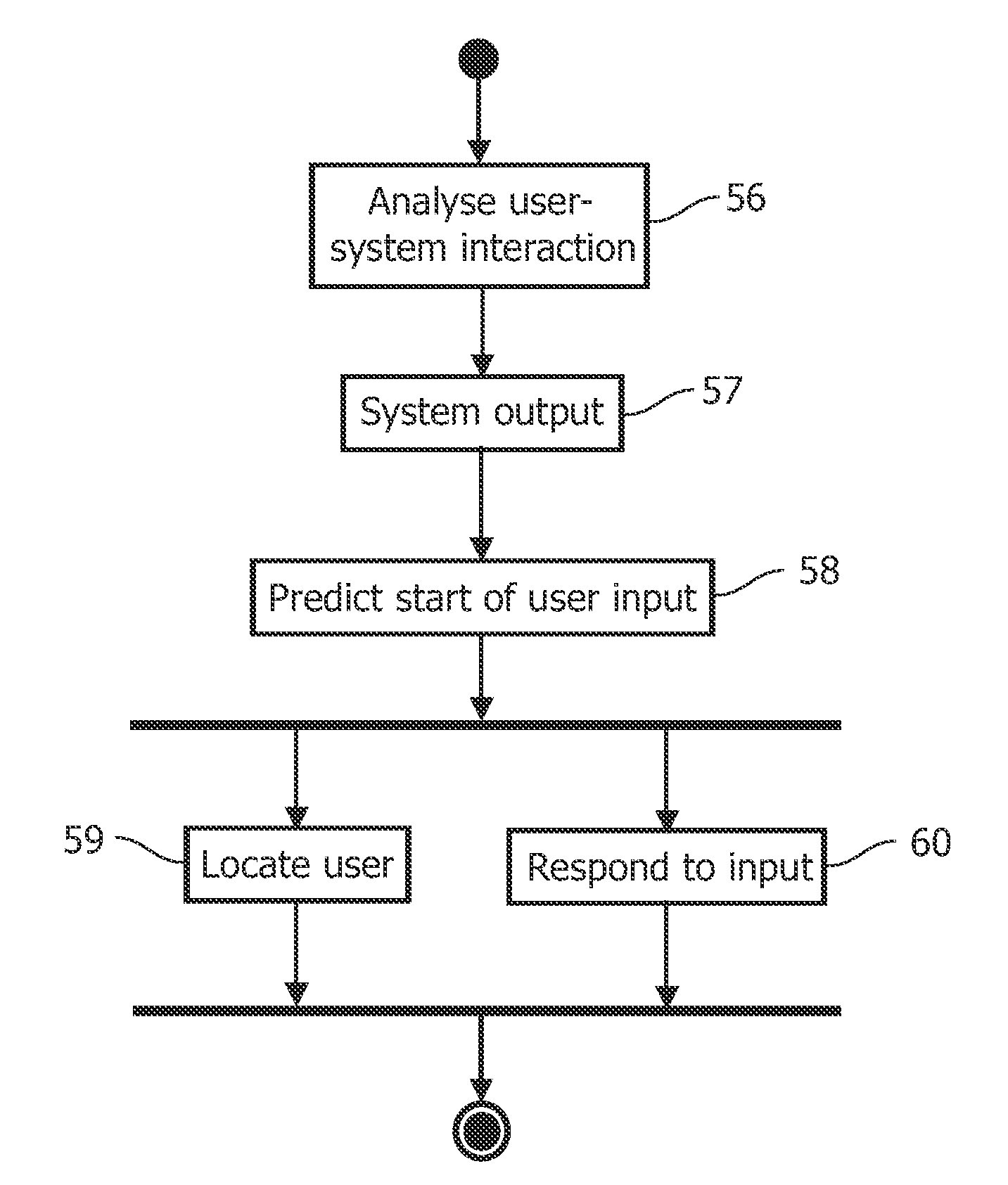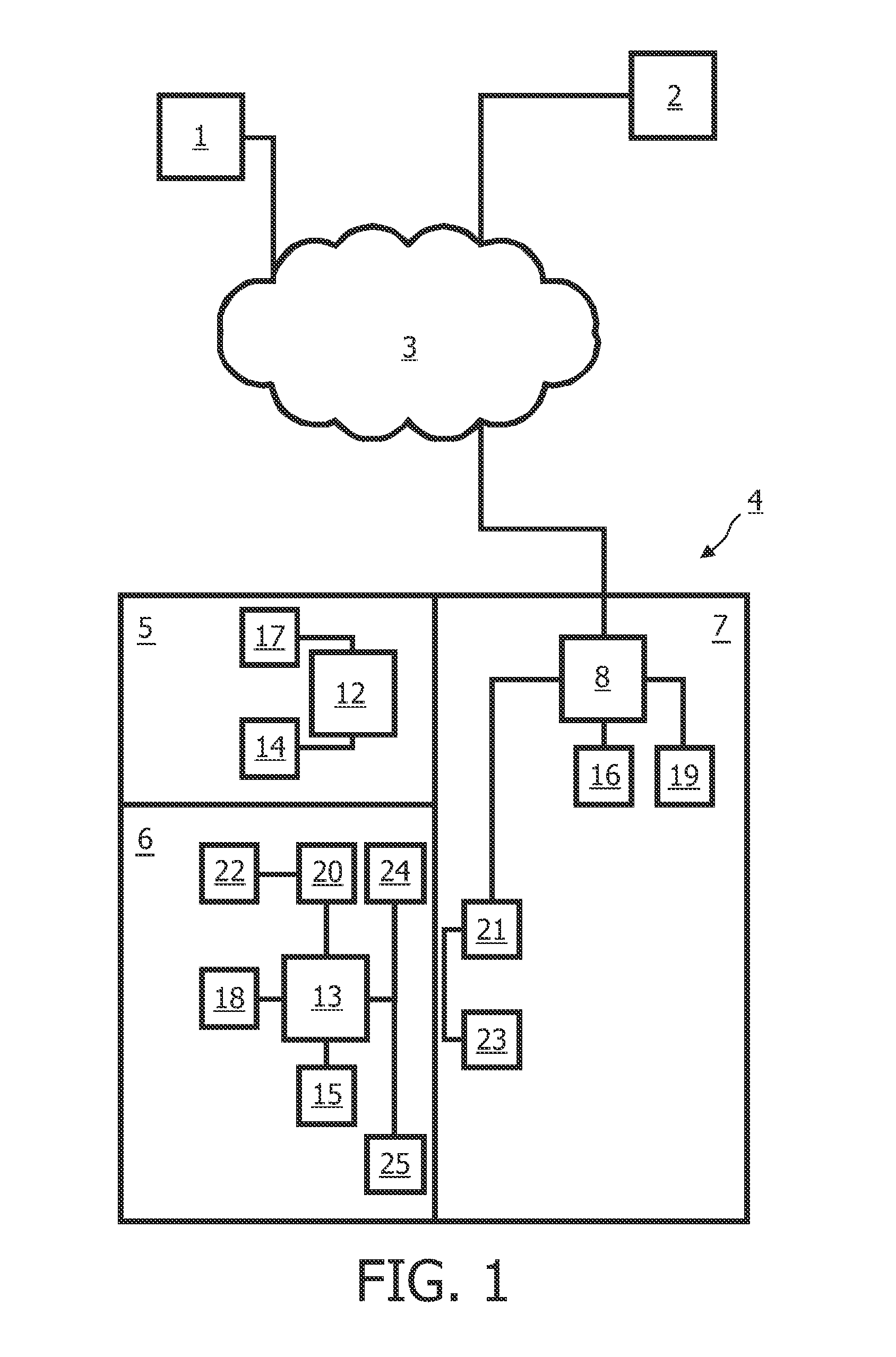Method of controlling a system and signal processing system
- Summary
- Abstract
- Description
- Claims
- Application Information
AI Technical Summary
Benefits of technology
Problems solved by technology
Method used
Image
Examples
Embodiment Construction
[0042]By way of example, two remote terminals 1, 2 connected to a telecommunications network 3 are shown in FIG. 1. A building 4 with three spaces 5-7 forms a local environment with at least one connection to the network 3.
[0043]The network 3 is a wide area network, and may include cellular telephone networks, POTS networks or broadband internet networks, for example. Communication may be via direct connection, but is preferably data packet-based. In the following, it will be assumed that communication is voice-based with optional video images, such as is the case for videoconferencing applications. The same principles also find application in other methods of information communication between individuals, including text messaging, posting messages on bulletin boards, etc. In those other example, as in this example, information communicated from the remote terminal(s) 1, 2 and from real or virtual local terminals in the building 4 is analyzed over time based on a model of interactio...
PUM
 Login to View More
Login to View More Abstract
Description
Claims
Application Information
 Login to View More
Login to View More - R&D
- Intellectual Property
- Life Sciences
- Materials
- Tech Scout
- Unparalleled Data Quality
- Higher Quality Content
- 60% Fewer Hallucinations
Browse by: Latest US Patents, China's latest patents, Technical Efficacy Thesaurus, Application Domain, Technology Topic, Popular Technical Reports.
© 2025 PatSnap. All rights reserved.Legal|Privacy policy|Modern Slavery Act Transparency Statement|Sitemap|About US| Contact US: help@patsnap.com



